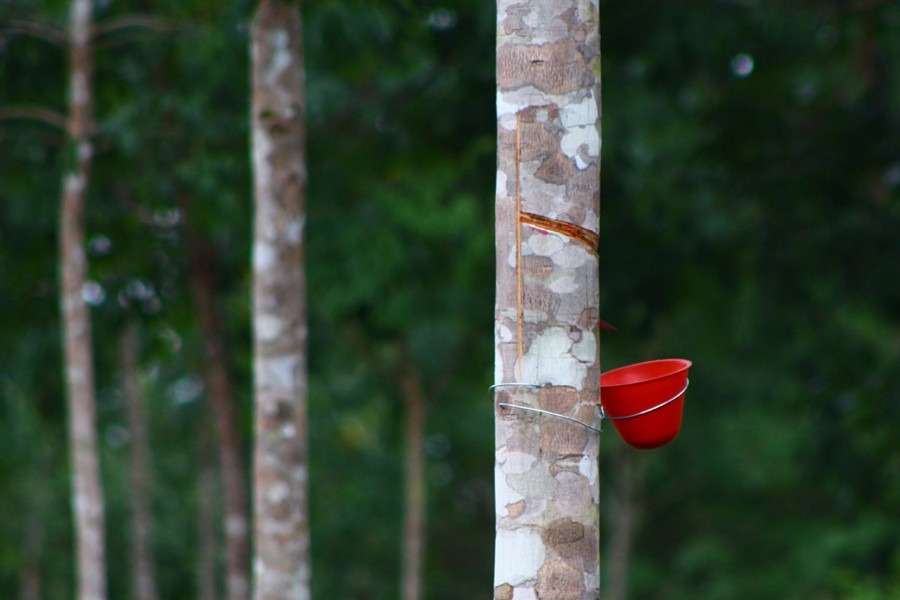The enterprising rubber plantation owners, long dejected, must be feeling upbeat over the prospects for full-scale revival of the sector. An initiative in this regard has been hinted at a Chattogram event. Started in the 1980s in select areas across the country, the rubber plantations couldn't show even a symbolic sign of going forward in the four long decades. Surprisingly, it began with high optimism. Despite the availability of the soil and environment required for rubber cultivation, the government-backed venture eventually petered out. The reasons are many, the chief one being the fall in demand for the country's 'natural rubber' in the local and overseas markets. It is said, in the last 40 years the naturally produced rubber was cornered by the type processed synthetically.
The natural rubber and rubber products' falling demand in the importing countries has been attributed to their compromise with quality. Yet there is a catch. Despite the synthetic rubber's overwhelming presence globally, a few Southeast Asian countries remained unbeaten with their exports of natural rubber. Thailand emerged as the most successful in this category. The fact belies many rubber growers' claim to the overseas countries' opting en masse for the synthetic rubber. In reality, the market for natural rubber is still wide. The demand for this biodegradable product obtained from a tropical tree has continued to rise steadily with the green movement gaining momentum worldwide.
The prospect of the rubber industry along with its shortcomings came up for discussion in the Chattogram city on September 7. An exhibition of rubber-based industrial products also featured the event, which couldn't have chosen a riper time. It was heartening to hear the Environment, Forest and Climate Change Minister, who attended as chief guest, urging the industries concerned to use domestic natural rubber instead of importing its synthetic alternatives. The department concerned now owns 40,000 acres of land ideal for growing rubber trees. In some sectors, the use of quality rubber is an imperative. The speakers at the Ctg event made hints at involving the private sector in rubber cultivation. As they have said, 33,000 acres of government land in Chattogram Hill Tracts have been leased out to private entrepreneurs for planting rubber trees.
To sustain the present impetus, the authorities ought to turn to the extent of imparting training required by persons directly related to rubber production. Moreover, proper knowledge of rubber production on the part of managers, tappers and others is also a sine qua non. Besides, facilitating joint ventures with other rubber producing countries ought to be kept in mind. Many of today's younger entrepreneurs were born after the start of the rubber plantation as a pilot project in the country in the 1980s. They cannot be expected to have any feeling of loss for the failure of their predecessors in 18 state-owned rubber gardens. As the rubber plantations are distributed across Bangladesh -- nine in Chattogram, five in Tangail and Mymensingh, and four in Moulvibazar, the younger and innovative entrepreneurs might feel interested to join the rubber sector, completely new to them. Bangladesh must seize the opportunity of making the most of this economically promising sector.


